On October 17th, the official launch of the Scroll Mainnet was carried out, resulting in over 100 thousand transactions being executed in the first week after launch. Since the introduction of the Scroll Mainnet and the introduction of official incentives, there has been a rapid increase in the number of ecosystems created based on the Scroll platform. This contributes to the emergence of a new wave of interest in second-level technologies.
- What is Scroll?
- The Founding Team of the zk-Rollup Platform
- Blockchain Platform Architecture
- The Scroll Ecosystem
- Products on the Scroll Platform
- Scroll Tokenomics
- Conclusion

What is Scroll?
Scroll was founded in 2021 and is an Ethereum scaling zk-Rollup project, compatible with EVM. Scroll's mission is to develop a universal network platform that will provide developers with capabilities comparable to those available in Ethereum, including a similar level of security and user experience, but with increased throughput, faster verification, and reduced gas costs.
The main launch of the Scroll network was planned for October 2023, anticipating the large-scale deployment of ecosystems and contracts on the platform. The Scroll project attracted funding of 80 million dollars, with Polychain Capital leading the list of investors, as well as participation from other significant organizations, including Sequoia China, IOSG, and Qiming Venture Partners, allowing the company to be valued at 1.8 billion dollars.
The Founding Team of the zk-Rollup Platform
The core team of Scroll creators includes Zhang Ye, a graduate of Peking University, who has been dedicated to researching zero-knowledge proofs since 2018. His primary role in the Scroll team involves conducting technical research in the area of zk-Rollup.
Sandy Peng, an alumnus of Cambridge University, who previously held a position at the Hong Kong Securities and Futures Commission, takes on the role of handling business, financing, and operations within the Scroll project.
Shen Haichen, a graduate of Tsinghua University and formerly working at Amazon on robot learning system projects, mainly focuses on engineering and development tasks within the Scroll team.
Architecture of Scroll
The architecture of Scroll is built on three main elements:
- Scroll nodes;
- the proof system;
- Rollup contracts along with bridges for inter-blockchain communication.
Scroll nodes function as second-level elements, forming blocks from user transactions, sending them to the main Ethereum network, and facilitating data exchange between the main network and the second level. The Scroll nodes consist of sequencers, coordinators, and relayers, each playing a specific role in the system's operation.
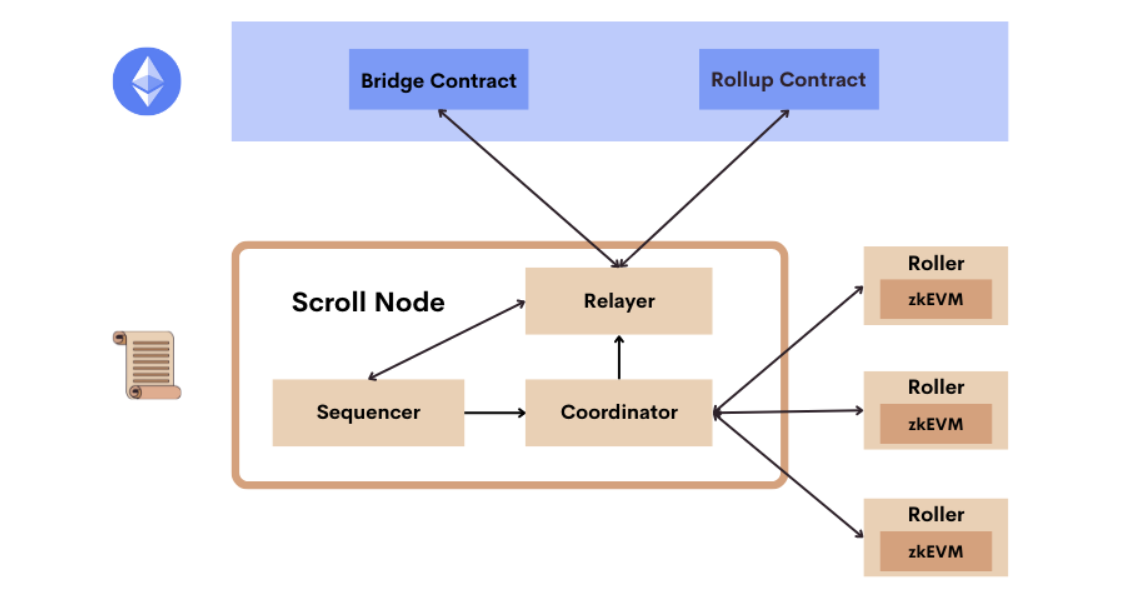
The network responsible for verification is named Rollers. Its primary function is to act as a regulatory body for the network, creating validity proofs for the zk-Rollup network. Additionally, Rollers can use specialized hardware, such as GPUs and ASICs, to reduce the time and costs associated with the verification process.
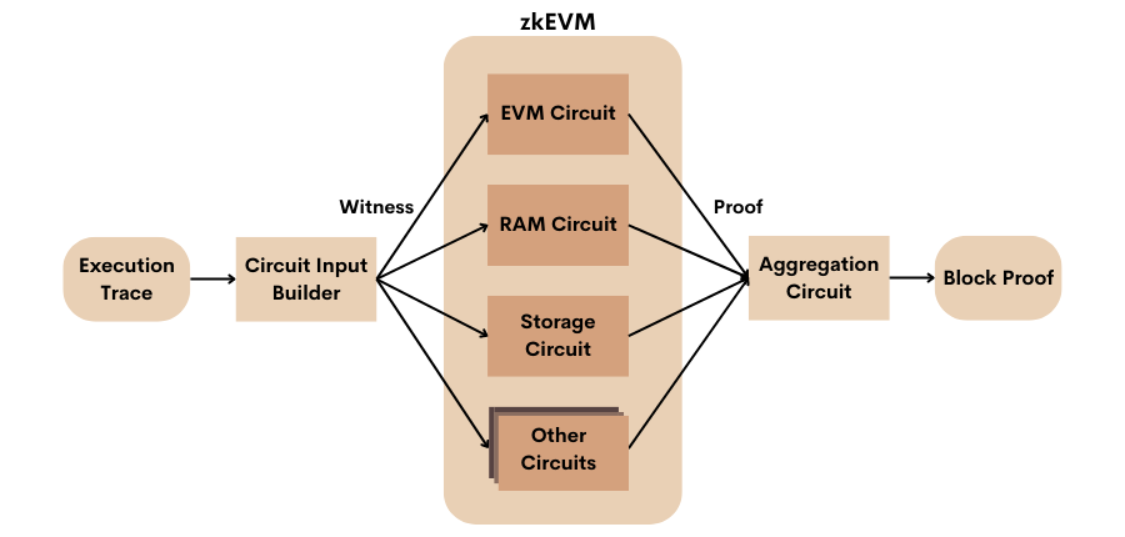
The verification bridge consists of a data compacting contract and a contract for facilitating interactions between different blockchains.
The Rollup contract serves to provide access to second-level network data and conducts the verification of proofs based on zkEVM. The inter-network bridge contract enables the movement of assets and data between the first and second-level networks.
Integrating these elements forms the core operational scheme of Scroll's zk-Rollup. Briefly, the sequencer orders blocks, creates proofs for them, which are then aggregated and passed to the Rollup contract via the coordinator. There, blocks are verified and further processed.
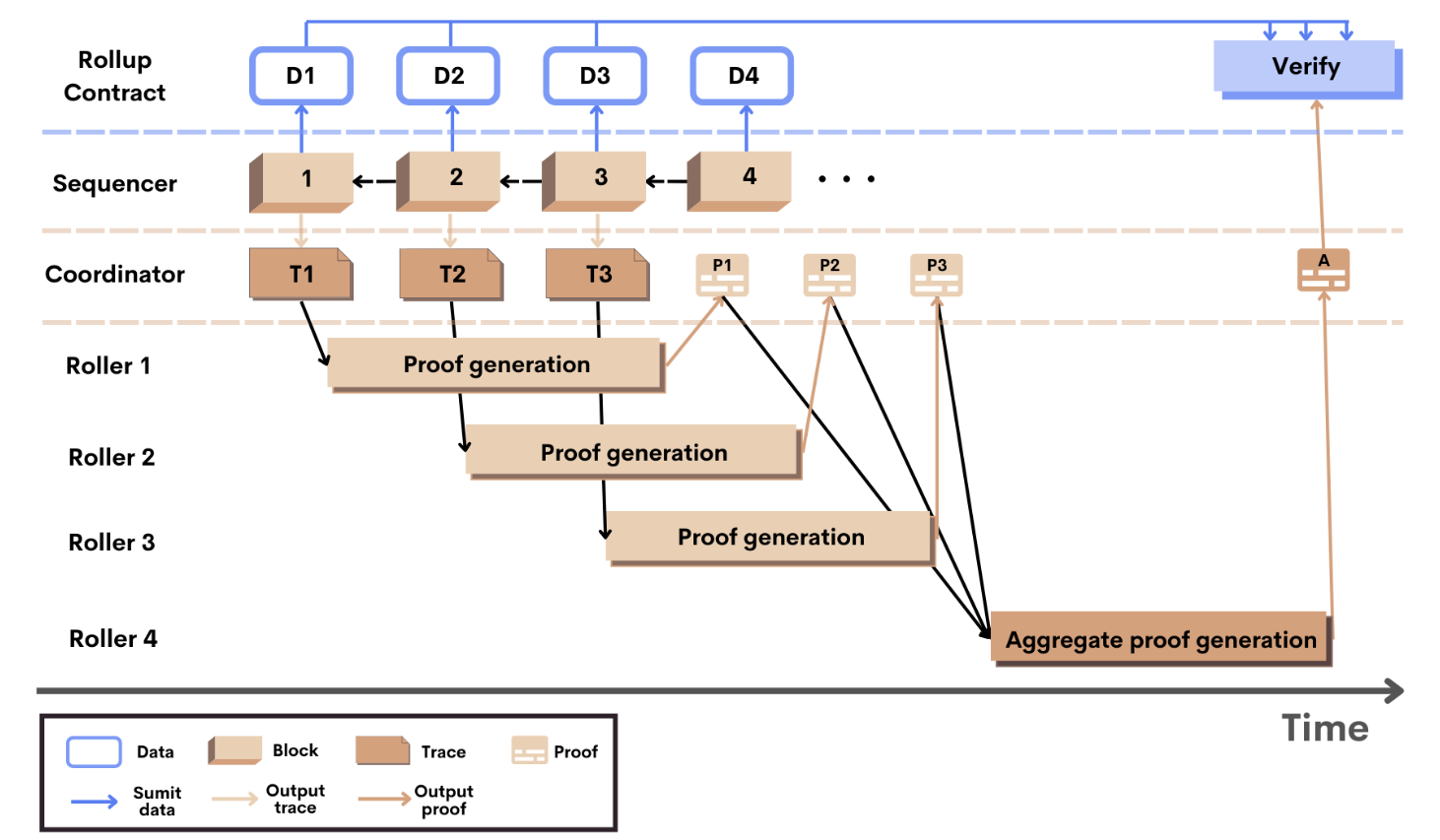
According to the flowchart, the process can be broken down into four main steps:
- The sequencer forms a sequence of blocks. It creates an execution trace T for each block and sends this information to the coordinator. Simultaneously, transaction data D is sent to the Rollup contract on Ethereum.
- The coordinator randomly selects a roller to produce a validity proof for each block being analyzed. This optimizes the proof generation process, allowing different rollers to work on proofs for separate blocks.
- The roller sends the block proofs back to the coordinator. Every k blocks, the coordinator assigns another roller the task of aggregating proofs from these k blocks into a single proof A.
- The final step involves the coordinator sending the aggregated proof A to the Rollup contract, where block completion is based on this aggregated proof, the previously presented state root, and transaction data commitments.
The process of finalizing blocks in Scroll in the first-level network is carried out through the following three phases, which each second-level block goes through before completion:
| Stage | Description |
|---|---|
| Precommitted | The sequencer forms and passes the block to the roller. At this stage, the blocks are not officially part of the Scroll Layer 2 chain, but users can use them, trusting the sequencer. |
| Committed | The transaction data of the block is published in Ethereum through the Rollup contract, making them accessible to everyone but not confirming the correctness of the transactions' execution. |
| Finalized | The correctness of the transactions in the block is verified and confirmed in the Ethereum network, and the blocks are included in the official Layer 2 chain. |
Scroll has the ability to execute its own EVM bytecode at the level of secondary networks while maintaining the reliable security mechanisms characteristic of Ethereum.
Scroll Ecosystem
The success of any technology is based on the support of a corresponding ecosystem. Without it, the technology may face limitations in development. Scroll is actively working on expanding its ecosystem. Since the launch of its mainnet, the company has already implemented more than 100 different projects, including DEX, DeFi, NFT, GameFi, and domains. Thanks to compatibility with EVM, many developed projects in the DeFi sector have already been successfully deployed in the Scroll ecosystem.
Official Scroll Bridge for cross-chain operations
Conducting operations between chains through the official Scroll Bridge is quite simple: the user only needs to specify the amount for transfer and press the button to top up the account to complete the process of transferring assets. At the moment, the bridge allows transactions only from the main Ethereum network to the Scroll network, with the transaction fee being about 30-40 Gwei, which is quite high. To reduce transaction costs, users can use third-party providers to perform transfers between networks.
Products on the Scroll Platform
Zada Finance Basics
Zada Finance is the first decentralized exchange (DEX) on the Scroll platform, utilizing cross-order book aggregation technology. This project aims to provide users with an extended set of trading pairs, reduce costs, and increase transaction speeds through the implementation of abstract wallets, order aggregation, and more flexible interest rate conditions. According to the official announcement on Twitter (now known as X), testnet participants can expect to receive rewards in the form of airdrop.
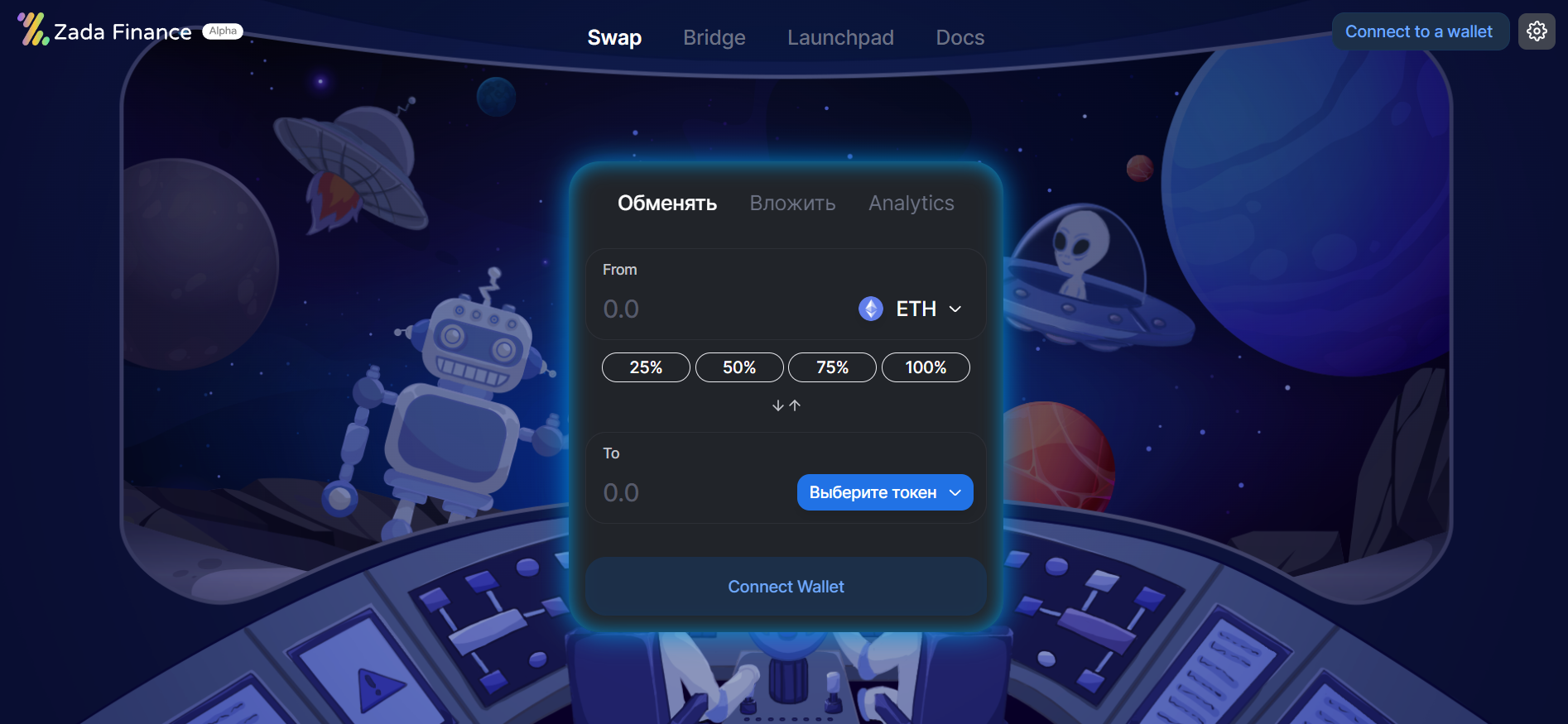
DEX Papyrus
Papyrus, as an embedded decentralized exchange platform on Scroll, functions as an automated liquidity management mechanism. It allows users to become liquidity providers for a pool, exchanging tokens within the pool under the condition of contributing an equivalent amount of each of the base tokens.
Cog Finance
Cog Finance is an autonomous lending platform based on Scroll, enabling users to lend against selected assets and set preferred collateral. Participants earn by lending their assets, with interest rates being variable.
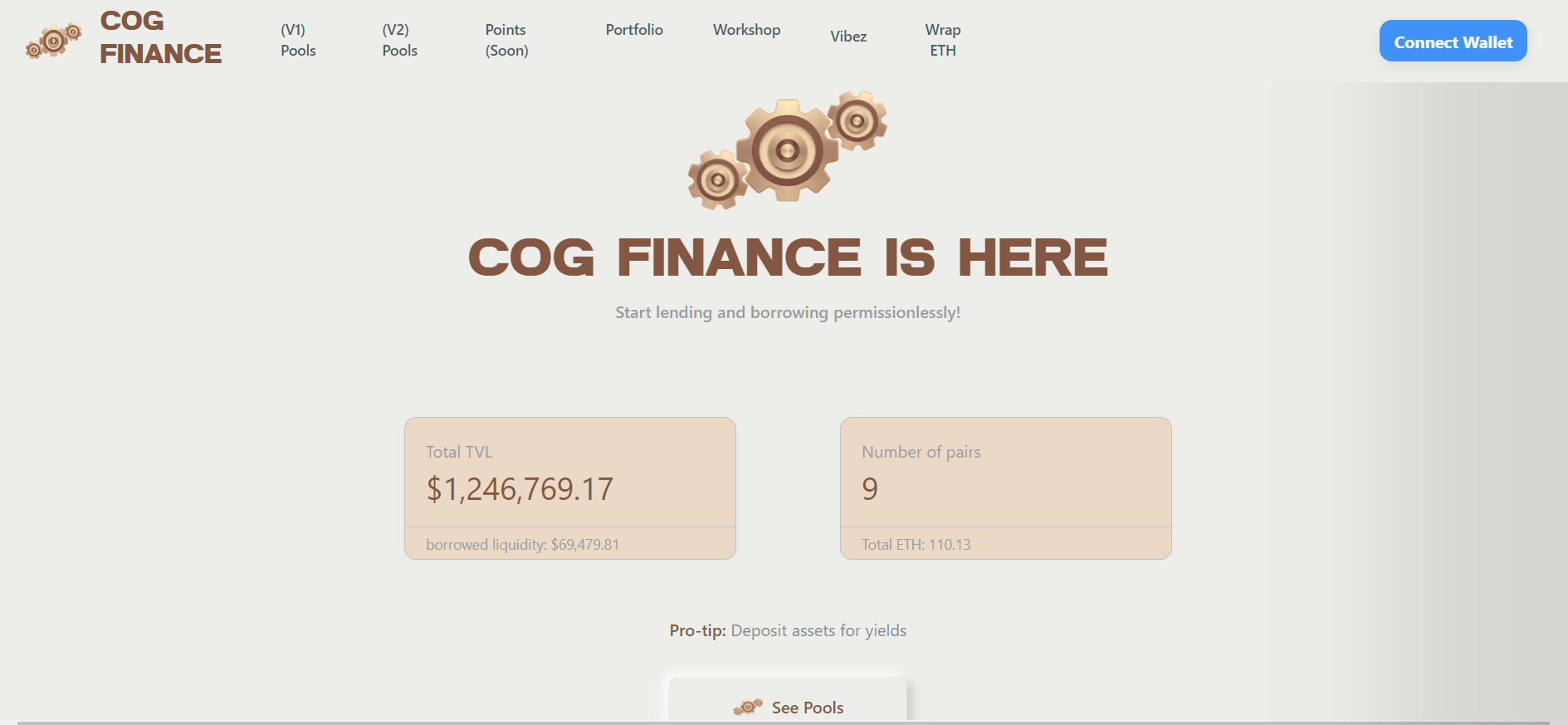
Scroll Name Service
Scroll Name Service is a decentralized naming service built on the Scroll mainnet. The purpose of Scroll NS is to offer a web3 identification method that involves a one-time payment for ownership rights, ensures fair distribution and launch, and provides new-level domain capabilities.

Scroll Tokenomics
Scroll has not yet presented its tokenomic model.
Since the launch of the Scroll mainnet, interest in it has significantly increased. Despite the lack of a released token, market expectations for the release of the Scroll token are high, with its potential value estimated at $1.8 billion. With the inclusion of more ecological initiatives to the Scroll mainnet, users gain expanded opportunities to interact with projects such as skydrome, iZUMi Finance, SynFutures, Symbiosis, spacefi, and others. It is important to regularly monitor updates to the Scroll ecosystem and engage with it at least once or twice a week.
In addition to the potential Scroll token, it's worth paying attention to the opportunities to receive airdrops from projects within the ecosystem. The Gate platform will support updated information about the development of the Scroll ecosystem and timely inform about new opportunities.
Conclusion
In the context of increasing competition among zk-Rollup solutions, Scroll stands out as a young but promising project. The company's focus is on further development of the ecosystem, including organizing hackathons and closely collaborating with projects in the ecosystem to strengthen the infrastructure of its mainnet and expand the ecosystem.
With broader adoption of zk-Rollup technology, the cryptocurrency ecosystem expects significant improvements. Rollup technology, being one of the most popular solutions for scaling Ethereum, plays a key role in strengthening second-layer networks based on the broad Ethereum ecosystem. Scroll's advantages, such as EVM compatibility and full decentralization, predict significant growth in its intrinsic value.





